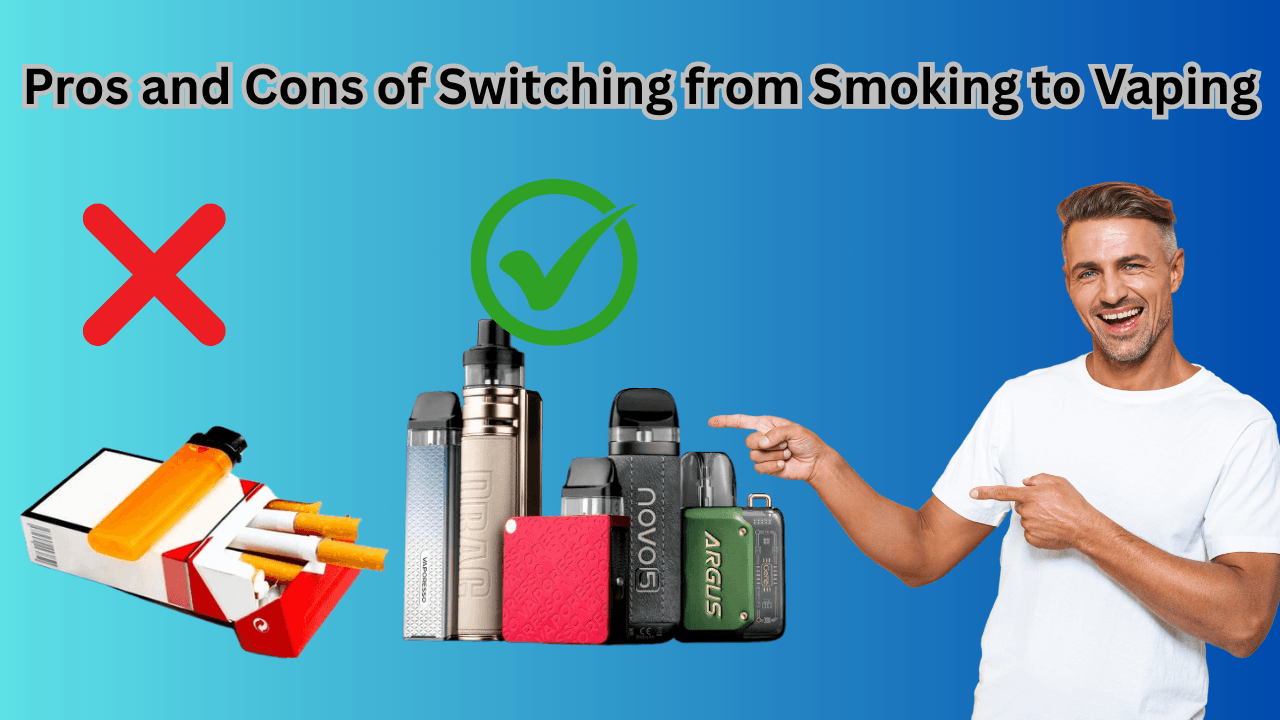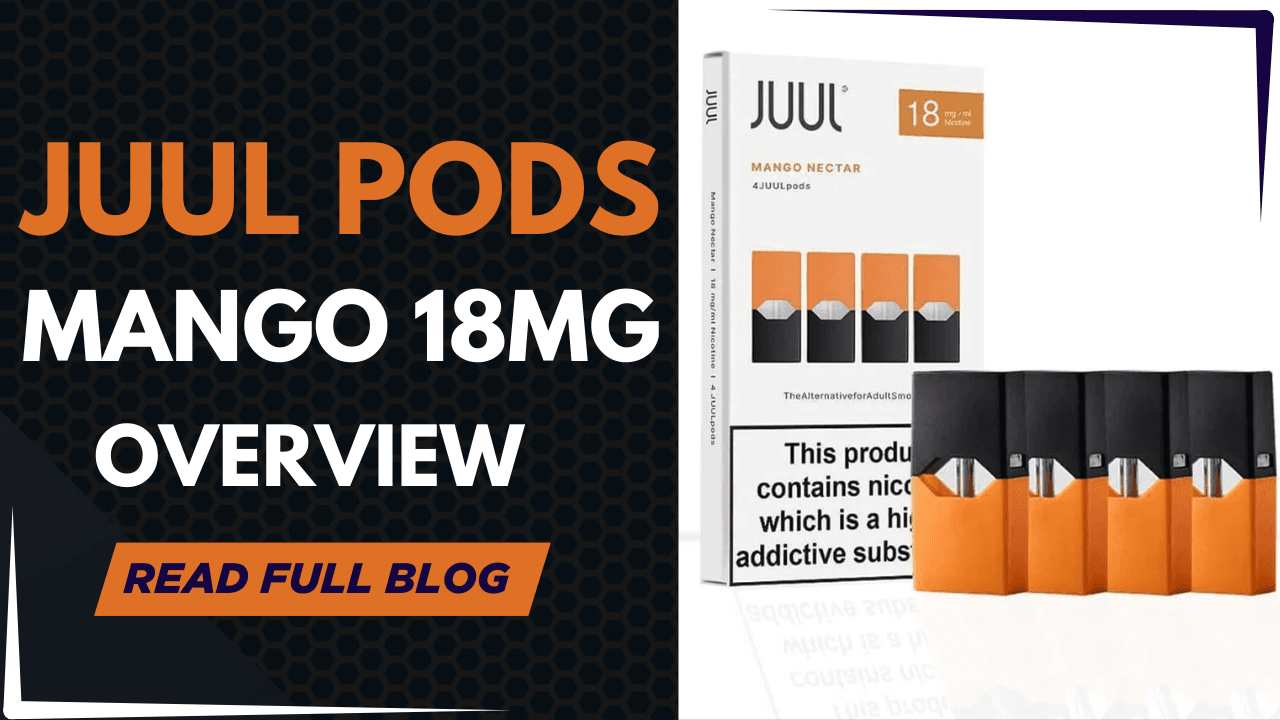- Introduction
- Understanding the Basics
- Pros of Vaping
- The Cons of Switching to Vaping
- Side-by-Side Comparison Table
- Common Misconceptions About Vaping
- Guide to Choosing the Right Vape for Beginners
- How to Transition Successfully: Step-by-Step Plan
- Environmental Impact
- Comparing Smoking Cessation Tools
- Scientific Studies and Expert Opinions
- Is Vaping for You?
- Final Thoughts
- Frequently Asked Questions
Introduction
Smoking is one of the leading causes of preventable diseases worldwide, including lung cancer, heart disease and chronic respiratory problems. In recent years, vaping has become a popular alternative to smoking, touted by many as a less harmful option. Vaping is on the rise worldwide, including in the UAE where smoking rates are high but declining slowly due to public health efforts.
This article will explore the pros and cons of switching from smoking to vaping, debunk common myths, discuss environmental impact and provide practical tips for those considering the switch. Whether you are a current smoker looking to reduce harm or just curious about vaping, this guide will give you the information you need to make an informed decision.
Understanding the Basics
What is Traditional Smoking?
Traditional smoking involves burning tobacco products like cigarettes, cigars or shisha. This combustion process releases over 7,000 chemicals, many of which are harmful or carcinogenic. When inhaled, these chemicals increase the risk of lung cancer, heart disease, stroke, COPD and many other health issues. Smoking also harms others, exposing family and community to secondhand smoke risks.
What is Vaping?
Vaping is the act of inhaling vapor produced by an electronic device that heats a liquid called e-liquid or vape juice. Unlike smoking, vaping doesn’t involve burning tobacco but uses a battery-powered coil to heat the liquid into an aerosol form that can be inhaled. E-liquids generally contain nicotine, flavorings and solvents like propylene glycol (PG) and vegetable glycerin (VG).
There are several types of vaping devices:
- Disposables: Simple, single-use devices pre-filled with e-liquid.
- Pod systems: Compact devices with replaceable pods.
- Vape pens: Pen-shaped devices with refillable tanks.
- Box mods: Larger, advanced devices with customizable settings.
Each offers different levels of nicotine delivery and user control.
Pros of Vaping
Harm Reduction vs Smoking
Switching to vaping reduces exposure to many of the harmful chemicals found in cigarette smoke. Public health organisations in several countries including the UK have said vaping is much less harmful than smoking cigarettes. Because vaping doesn’t involve combustion it eliminates tar, carbon monoxide and many carcinogens found in smoke.
No Odor and Cleaner
Unlike cigarettes vaping produces vapor that disappears quickly and doesn’t cling to clothes, furniture or indoor environments. This means a cleaner smelling experience and no lingering smell that affects smokers and those around them.
More Control Over Nicotine
E-liquids come in a range of nicotine strengths from 0mg to 24mg. This means smokers can control their nicotine intake and gradually reduce their dependency which can help with quitting in the long term.
Cost Effective
While the initial investment in a vape device may be more than a pack of cigarettes the long term cost of vaping is generally cheaper. Refilling e-liquids or replacing pods is usually cheaper than buying daily cigarette packs especially in areas where tobacco products are heavily taxed.
Variety and Customisation
Vaping offers a wide range of flavours from traditional tobacco and menthol to fruits, desserts and beverages which many users find more enjoyable than cigarettes. Advanced devices also allow users to adjust settings such as temperature and volume to customise their experience.
Social and Legal
Smoking restrictions in public places are getting stricter worldwide. Vaping is still regulated but is often allowed in more places and is less disturbing to bystanders. However users should always check local regulations which vary by country and region.
The Cons of Switching to Vaping
Health Risks Still Exist
Vaping is less harmful than smoking but not risk free. Vaping involves inhaling substances that can cause lung irritation, inflammation and potential cardiovascular effects. Long term effects are still being studied and caution is advised especially for young people, pregnant women and those with respiratory conditions.
Nicotine Addiction or Relapse
Vaping still delivers nicotine which is addictive. Some users may find themselves using nicotine more frequently or in larger amounts than when smoking and may perpetuate addiction. For some vaping can also make quitting nicotine entirely more difficult.
Youth Appeal and Overuse
Flavoured vape products can appeal to younger populations and increase nicotine addiction among teens and young adults. This has led to growing concerns and regulations to restrict youth access to vaping products.
Technical and Maintenance Issues
Vape devices need to be charged, refilled and sometimes coil or pod replaced which can be inconvenient or confusing for new users. Device malfunction or misuse can result to unsatisfactory experience or safety issues.
Regulatory and Legal Uncertainty
Vaping laws vary globally and are changing. Some countries ban vaping products or restrict them heavily. In places where vaping is legal, strict regulations may affect availability and use. Users must stay informed to avoid legal issues.
Vaping vs. Smoking in UAE: What’s Safer, Cheaper & More Convenient?
Side-by-Side Comparison Table
| Factor | Smoking | Vaping |
| Toxins/Chemicals | Over 7,000 harmful chemicals, many carcinogens | Significantly fewer toxicants, no combustion |
| Cost | High recurring cost | Lower over time with refillable devices |
| Odor | Strong, lingers on clothes & environment | Minimal and dissipates quickly |
| Nicotine Delivery | Fixed nicotine content | Adjustable nicotine strengths |
| Addiction Potential | High (nicotine + other substances) | Still addictive if nicotine is present |
| Health Risks | Well documented (cancer, heart disease) | Less known but lower risk, still present |
| Environmental Impact | Cigarette butts litter | Electronic waste, batteries, cartridges |
| Social Acceptance | Increasingly restricted | More accepted but regulated |
Common Misconceptions About Vaping
- “Vaping is just as bad as smoking.” While vaping is not harmless, it contains far fewer toxins than cigarette smoke and eliminates combustion-related chemicals.
- “All e-liquids contain harmful chemicals.” E-liquids are regulated in many countries, and reputable brands adhere to safety standards. Harmful additives are uncommon in legal markets.
- “Vaping is only for teens.” Though youth vaping is a concern, legal access is typically restricted to adults. Many adult smokers use vaping as a cessation tool.
- “If you vape, you can’t quit smoking.” Evidence shows that vaping can be more effective than traditional nicotine replacement therapies in helping smokers quit.
Guide to Choosing the Right Vape for Beginners
Device Types
- Pod Systems: Small, easy to use, and low maintenance. Ideal for beginners. Popular options include JUUL, Caliburn G by Uwell, and Smok Nord.
- Vape Pens: Mid-sized devices with refillable tanks, offering more control over vapor and flavor. Examples are Vaporesso Sky Solo, Innokin Endura T18, and Smok Stick V8.
- Iluma Device: A modern, sleek vape combining simplicity with advanced features. Iluma Devices are user-friendly and suitable for both beginners and experienced users who want reliable performance without complicated settings.
Nicotine Strength Recommendations
- Light smokers (less than 5 cigarettes/day): Use 3–6 mg/ml nicotine e-liquid.
- Moderate smokers (around 10 cigarettes/day): Use 6–12 mg/ml nicotine.
- Heavy smokers (more than 20 cigarettes/day): Use 12–18 mg/ml nicotine, or nicotine salts for smoother high-strength intake.
Flavor Selection
- Start with tobacco or menthol flavors for a taste close to cigarettes.
- Alternatively, try fruit flavors like mango or berry, or dessert flavors such as vanilla custard or caramel for a fresh and enjoyable experience.
How to Transition Successfully: Step-by-Step Plan
- Assess your smoking habits and nicotine dependency.
- Choose a vaping device and e-liquid that suit your needs.
- Set a quit date and prepare to reduce cigarette use.
- Gradually replace cigarettes with vaping to ease the transition.
- Track progress and nicotine intake to avoid overuse.
- Seek support from friends, online communities, or health professionals.
- Remain aware of relapse triggers and develop coping strategies.
Environmental Impact
Smoking’s Environmental Footprint
Cigarette butts are the most commonly littered waste item worldwide. They contain plastic filters that take years to decompose, polluting waterways and soil. Tobacco cultivation also contributes to deforestation and pesticide pollution.
Vaping’s Environmental Impact
Vaping devices contribute to electronic waste, especially disposables Vape and spent cartridges. Batteries and other components require responsible disposal to minimize environmental harm. Choosing reusable devices and recycling batteries can help reduce this impact.
Comparing Smoking Cessation Tools
Several aids help smokers quit, including:
Traditional Cessation Aids
- Nicotine Replacement Therapy (NRT): Patches, gum, lozenges, inhalers that ease withdrawal by supplying nicotine without smoke.
- Prescription Medications: Drugs like varenicline reduce cravings but need medical supervision.
- Behavioral Support: Counseling and support groups help prevent relapse.
How Vaping Compares
- Behavioral Replacement: Vaping mimics smoking actions, helps reduce cravings.
- Nicotine Control: E-liquids have varying nicotine levels for gradual reduction.
- Effectiveness: Studies show vaping with support may be better than NRT alone.
Considerations
- Vaping isn’t allowed everywhere, including some UAE regions—check local laws.
- Any method with support is better.
Scientific Studies and Expert Opinions
Global View
- Vaping is less harmful than smoking but not risk free.
- More research on long term effects needed.
UAE View
- Seen as a harm reduction tool for smokers who can’t quit nicotine.
- Strict regulations prevent youth use and ensure safety.
- Medical advice: consult a doctor before switching especially with health issues.
Harm Reduction vs. Safe Habit
- Vaping is harm reduction not a safe habit.
- Aim to quit nicotine completely over time.
Vaping vs. Smoking in the UAE: Health, Cost, and Convenience
Is Vaping for You?
Before you decide to switch to vaping, you need to consider several personal factors:
Self-Assessment
- Smoking Frequency and Intensity: Heavy smokers may benefit from vaping due to ability to customize nicotine levels, light smokers may prefer other quit aids.
- Health Status: If you have respiratory or cardiovascular conditions consult a doctor before vaping.
- Motivation to Quit: Quitting often requires readiness and commitment; vaping is most effective when used with a quit plan.
Professional Guidance
- Consult a healthcare professional to evaluate your smoking habits and health risks.
- They can also guide you on how to use vaping products safely and effectively or suggest other quit aids if appropriate.
Legal and Regulatory Considerations
- Check local laws on vaping in your area, including sales, usage locations and product types.
- In UAE, regulations are to control access especially among youth, so make sure you buy from licensed Online shop Like Juul Dubai and reputable sources.
Final Thoughts
Switching from smoking to vaping has many benefits like reduced exposure to harmful chemicals and social comfort. But vaping is not risk free and long term effects are still under study.Treat vaping as harm reduction and part of quitting nicotine completely over time. Use good devices, monitor your nicotine and get professional support to increase your chances of quitting for good.
Frequently Asked Questions
Is vaping safe long term?
Vaping is less harmful than smoking but not risk-free. Research is ongoing about its long-term effects.
Can vaping help me quit smoking?
Many studies show vaping to be an effective quitting aid, sometimes more so than traditional nicotine replacement products.
Is secondhand vapor dangerous?
Secondhand vapor contains fewer toxins than cigarette smoke but is not completely harmless.
What are nicotine salts?
Nicotine salts are a form of nicotine that allows smoother inhalation at higher concentrations, useful for heavy smokers transitioning to vaping.
Are disposable vapes better than refillable?
Disposables offer convenience but produce more waste. Refillable devices are more economical and environmentally friendly.
Can I vape indoors in the UAE?
Vaping laws in the UAE are strict, and vaping indoors in public places is generally prohibited. Always check local regulations and respect no-smoking zones.
Will I experience withdrawal symptoms when switching to vaping?
Some withdrawal symptoms like irritability or cravings may occur but are usually milder compared to quitting smoking cold turkey.
How often do I need to replace vape coils?
Coils typically last 1-2 weeks depending on usage and e-liquid type. Regular replacement ensures better flavor and vapor production.
Can I use any e-liquid with my device?
Not all e-liquids are compatible with every device. For example, pod systems often require specific pods or nicotine salt liquids, while box mods work with freebase nicotine e-liquids.



